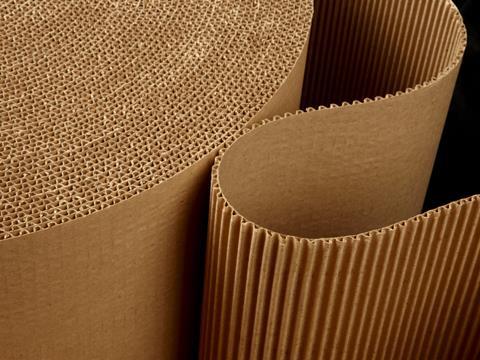
Is flexibility while serving multiple retail channels the key to the success of corrugated, and how will this play out in the future within retailing? Neil Osment, Managing Director of paper packaging industry analysts NOA, shares his thoughts with Packaging Europe.
Over the last decade demand for corrugated has risen, but in 2021 demand was almost out of control, and reached a level we predicted would only be achieved in 2025.
As has been well-documented, the pandemic was the driver behind this rapid acceleration, with huge demand for e-commerce throughout Europe as we worked from home and took to online ordering, with our goods being delivered in boxes.
The growth in demand has tailed off in more recent months, as working from home moved towards a more hybrid model of working and we began to spend our cash elsewhere, with holidaying abroad, meals out and entertainment once again becoming readily available.
This doesn’t mean demand for corrugated has fallen away and we predict it will continue to rise over the next five years; the ongoing trajectory is still upward, but at a steadier rate.
However, if you look behind the headlines as to where this demand is (and will be) coming from, the story gets really interesting. Because this continued growth in demand for corrugated won’t just be from e-commerce, much will remain from its traditional market: bricks and mortar retailers. Corrugated has the agility to respond to demand, wherever it comes from; it is fantastic at backing the winning horse.
To put this into context, you could be forgiven for assuming that when e-commerce-related demand for corrugated rose, then demand from traditional retail channels reduced to ‘compensate’. This hasn’t been the case; demand for B&M has merely plateaued, it’s never gone away.
So why might demand from e-commerce dampen? Among the more obvious reasons are (as already mentioned) our pandemic-fuelled, frenetic online shopping days have passed. Faced with the cost-of-living crisis, in relation to food in particular, there is also evidence across Europe that people are doing multiple smaller shops in-store rather than placing big online orders.
In the UK, sales in Aldi and Lidl were up by 22.7% and 21.5% respectively in the three months to the end of October, compared with 5.2% growth for the market as a whole, and neither offers home delivery (at the moment, anyway).
But there is another reason. As e-commerce ‘grows up’ it’s becoming apparent that the original delivery model was flawed, and that it has to evolve to remain (or become) profitable. And for this, it will need less corrugated (or incredibly cheap corrugated packaging, to be viable).
Here’s how the model is flawed. The commercial feasibility of online ordering has worsened because of the cost of distribution; drivers’ wages are increasing and fuel costs are rising rapidly. Faced with already wafer-thin profit margins, marketing a £10 t-shirt (for example) with free delivery simply isn’t viable. The likes of Amazon make their money today on their subscription offerings, such as Prime and Amazon Music.
Clothing companies are rethinking their offers of free delivery and free returns, as the cost of sending clothes to the consumer, only to have a large percentage then sent straight back, is prohibitive. Reportedly, one of the biggest TV shopping channels has a third of its sales coming back as returns.
Even the big supermarkets, which make most of their money in the stores and partly prop these sales up with home delivery, will be thinking of raising their minimum spend to qualify for free delivery, because home delivery is proving too costly.
So, what does this flawed delivery model and, as corrective action is taken, potential dampening of demand for boxes from e-commerce mean for the corrugated sector?
The pendulum is swinging back towards B&M retailers, specifically LLDs (limited list discounters), like Aldi and Lidl. As we’ve noted, they are growing significantly, and they are in favour of using corrugated as a promotional product as well as using it for distribution within their sophisticated supply chains. They love corrugated!
In summary, we have one product – corrugated – which is so versatile it can rapidly switch between retail channels, depending on demand. Which uses will be most popular? Corrugated for distribution? Corrugated that needs inside print? Corrugated for brand promotion? The answer to this is being investigated by our specialist paper packaging market research team, and we look forward to sharing the results.
Neil Osment is Managing Director of NOA, a business development and market research consultancy specialising in the paper packaging industry, which works closely with FEFCO, ECMA and ICCA to deliver market insights. Before forming NOA, Neil enjoyed a successful 25-year career in senior management posts in the packaging industry.
















No comments yet